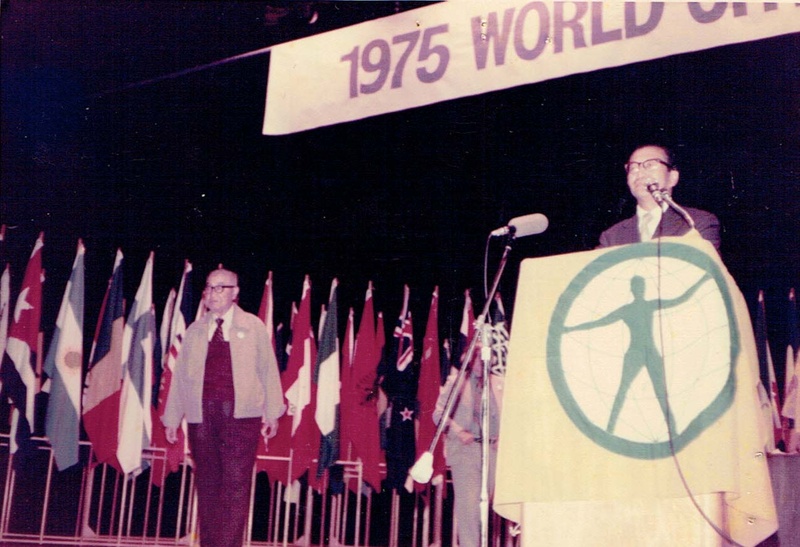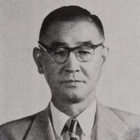For about a year, we have been following the life and achievements of Shinichi Kato, who was active in both Japan and the U.S. Born in Hiroshima in 1900 and dying in his hometown in 1982, Kato was a man of action who lived through the 20th century to the fullest, even as he endured the war.
To reiterate, I became interested in Kato when I learned about "A Centennial History of Japanese Americans in the United States," which he wrote and edited. Published in 1961, this book records the footsteps of Japanese and Japanese Americans across almost the entire American mainland. To gather this information, Kato drove all over the United States by car, covering a total distance of 40,000 miles. His results are detailed, such as "The first Japanese to enter XX in XX state is thought to have been XX," and one can imagine the painstaking research that went into it.
However, there was no record of the itinerary of the research trip, the type of car he used, how he traveled, how he observed the lives of first and second generation immigrants, and what he had to say, so I wanted to know more about that and started to look into it. Unfortunately, I was unable to find a comprehensive record of the trip. However, on the other hand, I was intrigued by the life and thoughts of Kato Shinichi, and I wanted to find out more about him.
Thus, this series is the first compilation of interviews to trace Kato's footsteps. As I began the series with a somewhat apologetic slogan, "It's difficult to follow someone's life," there were limitations to the time I could devote to interviewing people due to circumstances on the part of the interviewers, and there was also a limit to the number of interviews I could do within Japan.
Nevertheless, I was able to meet some relatives who knew him and people who knew about his activities when he was alive, and was able to trace his life, albeit vaguely. I was lucky enough to meet Kato's nephew, Junji Yoshida, by visiting the area around the house where Kato once lived in Hiroshima City and the temple where his funeral was held.
I first learned from Kato's death report (1982) that the Kato family temple was Enryuji Temple in Hiroshima City, and when I visited the temple, the wife of the previous head priest told me, "There was no one nearby to look after Mr. Kato's grave, so his nephew moved it there." Fortunately, I found the name and approximate address of the nephew's father, and when I looked it up on the Internet, I found the address of someone who looked like him.
Using this information, I drove to the outskirts of Hiroshima and rang the intercom of the house I was looking for. However, there was no response and no sign of anyone living there, so I gave up and started to head home, when someone called out to me from outside, asking, "Is there something I can help you with?" This person was Kato's nephew, Yoshida-san, who was a friend of Kato's and through him I was able to learn more about Kato's personality and personal life. He also showed me photos of Kato's activities in America.
As for people who knew Kato when he was alive, I was also able to hear more about Kato's character from Mineko Morishita of the Hiroshima branch of the World Federalist Movement Association, whom I met while researching Kato's younger brother and sister who died in the atomic bombing.
I found out that Kato has one child (the eldest son) who lives with his family in the U.S., and that his two children (Kato's grandchildren) are also in the U.S. As I wrote in my previous article, I was able to get in touch with the grandchild through the Hiroshima Prefectural Association in Los Angeles, and discovered that there was a letter that Kato had written to the Secretary-General of the United Nations.
When the war began, Kato returned to Hiroshima from the United States and became a reporter for the Chugoku Shimbun. Thanks to Masami Nishimoto, a special editorial committee member for the Chugoku Shimbun, we were able to learn a little about Kato's time as a reporter and his time in Hiroshima, when he left the company and became involved in the peace movement. Without the information from Nishimoto, including past newspaper articles related to Kato, this series would not have been possible.
Shortly after leaving the Chugoku Shimbun, Kato returned to the US and worked at the Los Angeles newspaper "Shin Nichibei" (New Japan and America), where he edited "The Centennial History of Japanese Americans in the US." However, as the company was short-lived, I was unable to find anyone who knew Kato from his time there. The company had ties to the Sankei Shimbun, and I found out that a Sankei journalist had worked with Kato at the company's office from Japan at the time. I then searched for a Sankei journalist from that time, and learned of Abe Mutual Aid through the Japan National Press Club newsletter, and spoke to him. However, it seemed that he had been posted there after Kato had left Shin Nichibei.
This series has been written as "A journey following in the footsteps of Kato Shinichi," and includes the process of these interviews.
When I do research, I learn a lot of things as a by-product, even if they don't directly appear in the manuscript. This time, I learned in particular about the atomic bomb, which Kato himself was exposed to and caused the loss of his family.
On August 6, 1945, Kato was on his way to work when the atomic bomb was dropped, and immediately afterwards he ran through the devastation and dead and injured city of Hiroshima before arriving at the Chugoku Shimbun headquarters. His notes detailing the scenes he witnessed at the time are heartbreaking, and I imagine that the writer must have been in pain as well. During one of my interviews, I rented a bicycle and went around what is now Hiroshima, trying to retrace as much as possible the path he took back then.
Hiroshima is one of the leading immigration prefectures in Japan, having sent out many immigrants. It is also a city that was hit by the atomic bomb along with Nagasaki. Kato Shinichi was deeply involved in these two issues, immigration and the atomic bomb, and confronted them head-on as a journalist and a peace activist. To follow in Kato's footsteps is to follow the history of immigration to America and to learn about the atomic bomb.
This series was made possible thanks to the help and support of many people in Hiroshima and Los Angeles. I would like to take this opportunity to express my sincere gratitude to them all.
(Titles omitted, end)
© 2022 Ryusuke Kawai







